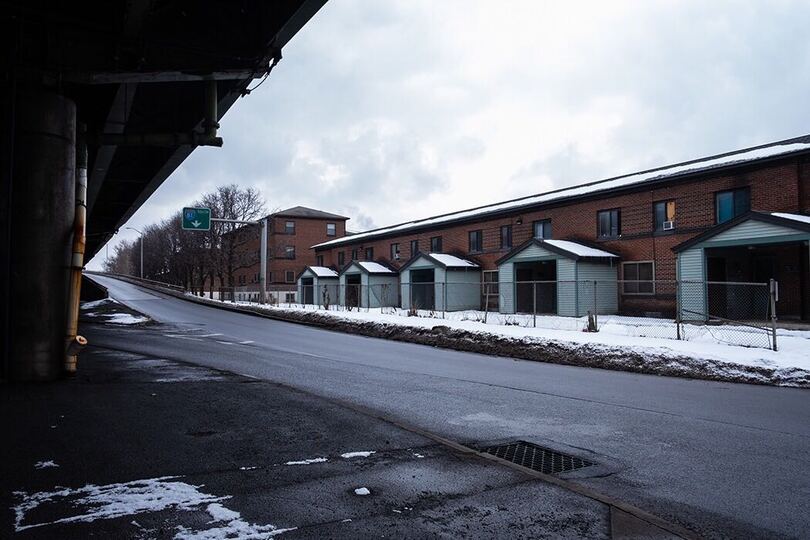$100 million project could revitalize East Adams neighborhood

Blueprint 15 aims to reinvent the East Adams neighborhood and combat the intergenerational poverty that has existed there for decades. Dan Lyon | Assistant Photo Editor
Syracuse is a city divided. On one side of Interstate 81, there are the two largest employers of the city — Syracuse University and Upstate Medical University. On the other side, there’s a neighborhood entrenched in poverty — East Adams.
The city of Syracuse, along with the Syracuse Housing Authority and the Allyn Family Foundation, are trying to change that with a $100 million development plan. The plan, called the Blueprint 15, aims to reinvent the East Adams neighborhood and combat the intergenerational poverty that has existed there for decades.

Susie Teuscher | Digital Design Editor
The plan offers a solid and realistic framework that has the potential to create opportunity in a neighborhood that has been long forgotten. Most importantly, it could actually work to revitalize our city.
“The project is exciting because it allows Syracuse to test a development model that could work in East Adams, as well as anywhere else. After all, if the project becomes successful, you could probably apply it to other places in Syracuse,” said Robert Shibley, dean of the School of Architecture and Planning at the University of Buffalo.
The successful transformation of the East Adams neighborhood would rely on mixed-income housing and an overhaul of education.

Susie Teuscher | Digital Design Editor
The model ultimately relies on community input, emphasizing the importance of strong leadership to work with residents to rebuild the community from the ground up. The model aims to lift people out of poverty, not replace them with new people.
Implementing mixed-income housing would result in thousands of decaying housing units being replaced by modern, smaller-scale housing, as well as more parks and businesses, commercial development opportunity and a grocery store. More importantly, people receiving public assistance would be placed in the same buildings as those paying market rates.
Mixed-income housing fights the rippling and devastating effects of concentrated poverty, Shibley said.

Susie Teuscher | Digital Design Editor
An education pipeline would result in an overhaul of the local education system, as well. It would likely use a STEAM model, that emphasizes science, technology, engineering, the arts and math in order to prepare kids for the possibility of entering higher education. Plus, it would also result in a preschool that would work complimentary to the elementary school.
Expensive development projects often bring updated infrastructure and good amenities to residents. But they often miss out on the ultimate goal of any urban development project — a community that generates and circulates its own wealth, Shibley said.
The Blueprint 15 project will take many years to complete and will probably face hurdles along the way. Still, Blueprint 15 is an extremely exciting prospect for a city that has long faced unfathomable levels of poverty.
Santiago Hernandez is a sophomore finance major. His column runs biweekly. He can be reached at sherna06@syr.edu.





